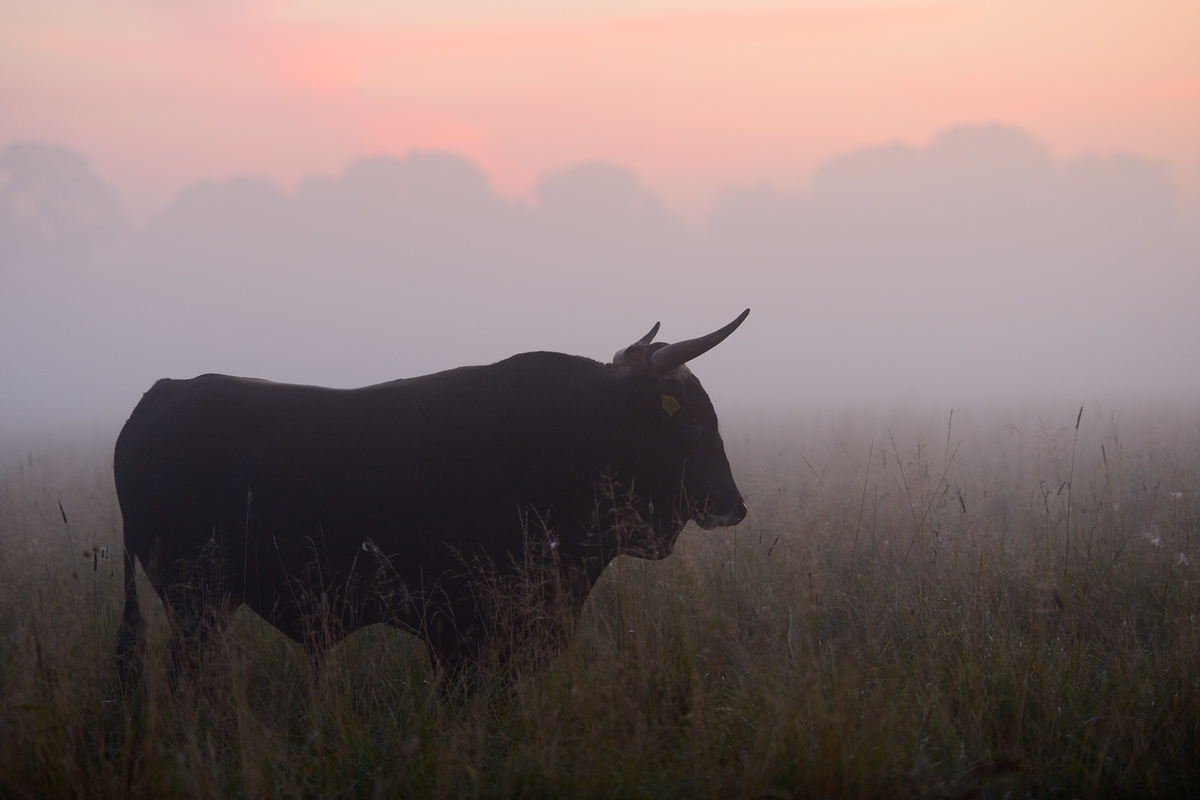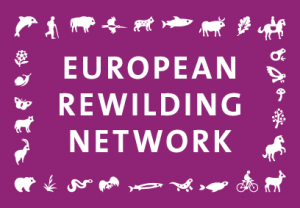Cooperation between a member of the European Rewilding Network (the Auerrind Project) and partner of Rewilding Europe (the Taurus Foundation) saw eight Tauros translocated between the Netherlands and Germany in August. A significant milestone in the development of the Auerrind Project, the translocation will help with the back-breeding of aurochs.

 At the end of August a group of eight Tauros cattle was transported between Stichting Taurus (the Taurus Foundation) in the Netherlands and the Auerrind Project in Germany. The two bulls (one Maremmana and one Pajuna) and six young cows (one pure Pajuna and five crosses) were transferred from the Keent region to Lorsch, in western Germany, where the Auerrind Project is based.
At the end of August a group of eight Tauros cattle was transported between Stichting Taurus (the Taurus Foundation) in the Netherlands and the Auerrind Project in Germany. The two bulls (one Maremmana and one Pajuna) and six young cows (one pure Pajuna and five crosses) were transferred from the Keent region to Lorsch, in western Germany, where the Auerrind Project is based.
“This translocation will assist us as we attempt to recreate a modern day equivalent of the aurochs,” says project leader Claus Kropp. “It represents a milestone development, and we are really looking forward to incorporating the Pajuna breed into the project next year.”

As the ancestor of all domesticated cattle, it is hard to think of a more important animal in the history of mankind than the aurochs. Once widespread across Europe, it was a keystone species within many continental ecosystems. But by 1627 this impressive animal had been hunted to extinction throughout its range.
The aurochs may be long gone, yet all is not lost. Today, strands of its DNA remain alive, distributed among a number of ancient cattle breeds that still exist across Europe. These include the Pajuna and Maremmana breeds involved in this transportation, as well as others such as the Sayaguesa and Maronesa. Using these breeds, Rewilding Europe, together with the Dutch Taurus Foundation, embarked on a programme to bring the aurochs back to life in 2013. This is the Tauros programme.
The aim of the Tauros programme is to bring back a functional, wild version of the aurochs – called the Tauros – by establishing viable wild populations of this impressive animal in several European locations. This, in turn, will boost the role of the Tauros as a natural grazer and benefit biodiversity through the creation of biodiversity-rich mosaic landscapes across the continent.
The Auerrind Project, which joined Rewilding Europe’s European Rewilding Network in May this year, is a rewilding project focusing on natural grazing, back-breeding and scientific research on aurochs. The ultimate goal of the back-breeding part of the project is also to recreate aurochs as closely as possible, from both a genetic and phenotypic perspective.
Located at the Lorsch-based Lauresham Laboratory for Experimental Archeology in the Bergstraße district of southwest Germany, as well as the nearby Association for the Reintroduction of Large Herbivores, UNESCO Global Geopark Bergstraße-Odenwald and Hohmeyer Landscape Conservation Farm, the project also works to raise awareness about the need for large herbivores in European nature.
Making the connection
 Rewilding Europe is part of a burgeoning pan-European rewilding movement which has seen many inspiring initiatives develop over recent years. With rewilding-related projects continuing to multiply and flourish across the continent, the objective of the ERN is to connect, support and strengthen them. Members meet regularly – usually via online seminars – to share knowledge, insight and examples of best practice.
Rewilding Europe is part of a burgeoning pan-European rewilding movement which has seen many inspiring initiatives develop over recent years. With rewilding-related projects continuing to multiply and flourish across the continent, the objective of the ERN is to connect, support and strengthen them. Members meet regularly – usually via online seminars – to share knowledge, insight and examples of best practice.
Rewilding Europe extends a warm welcome to all rewilding initiatives and encourages them to apply for membership of the ERN. Please view this page for more information on application.
